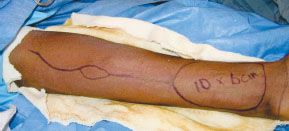FIGURE 11.1 This figure is a transoral view of a carcinoma of the pharynx (arrow).
Although modern free flap teams can provide reconstruction very efficiently, there are certain patient situations when primary closure or pedicle flaps, either supraclavicular island or pectoralis major myocutaneous flaps, may be chosen to shorten operative times and reduce the risk of additional potential operations in the setting of a rare free flap compromise. For instance, patients of advanced age, those with cardiac conditions, or those with aortic stenosis where added potential fluid shifts or operative time may increase the risk of perioperative events may be considered for regional tissue closure rather than free tissue repair. All patients benefit from a comprehensive multidisciplinary approach to designing a treatment plan. This also includes preoperative and postoperative assessment by the speech and swallowing team to achieve maximal functional outcomes.
PHYSICAL EXAMINATION
Physical examination requires attention to both the donor site and the recipient site. The donor site evaluation requires an Allen test on the upper extremity to ensure that there is an intact vascular palmar arch. Because the radial forearm free flap will be used for reconstruction, a careful examination of the volar surface of the forearm is important to ensure that there has not been trauma or prior surgery that may compromise the harvesting of the flap. It is important to plan the harvest of the forearm flap from the nondominant arm. The recipient site should be carefully evaluated to determine the size of the defect. This will help to determine the appropriate size of the skin flap reconstruction.
INDICATIONS
When I assess the lateral pharyngeal defect, I consider a number of factors in determining the need for a free flap. Prior radiation and surgery intuitively raises a concern about the quality and integrity of the local native tissues that I believe benefit from repair with vascularized grafts from a remote nonirradiated site (Fig. 11.2). If the defect connects to the neck, then flap reconstruction may be indicated especially if the defect is large or the quality of the tissue prevents a tension-free primary closure. Transoral defects from cancers removed in standard fashion or robotically that do not connect to the neck may be safely allowed to granulate or be closed with local flaps for carotid coverage. If there is communication with the neck and if there has been a radical neck dissection performed and I consider the carotid artery at risk either from wound breakdown externally or soilage from a potential salivary leak, free flap repair and regional coverage become important considerations. The carotid artery can become exposed internally or externally, and the risk of this must be assessed in the absence of the sternocleidomastoid muscle (SCM).

FIGURE 11.2 This photograph demonstrates the design for the radial forearm free flap. There is a cutaneous skin paddle for reconstruction of the pharynx and a second monitor skin paddle to evaluate the viability of the flap.
With an intact SCM, consideration can be given to pexing the medial aspect of the SCM to the prevertebral fascia when possible to potentially serve as a salivary diversion in the event of a fistula. Similarly, a flap can be designed such that a deepithelialized portion or additional soft tissue can be harvested to protect the carotid artery and provide a tissue barrier for protection between the pharyngeal reconstruction and the great vessels.
CONTRAINDICATIONS
There may be considerations in some settings where the radial forearm may not be ideal or feasible. For instance, I have had patients in whom rheumatologic conditions exist or severe Raynaud disease where the potential for added dexterity or vascular morbidity may not be reasonable. Additionally, a number of patients through the years have had the radial arteries harvested for prior cardiac surgery eliminating the radial forearm as a donor site. Prior free flaps or trauma may also preclude its use. In these patients, other potential fasciocutaneous sites must be considered, such as the lateral arm, rectus, anterolateral thigh (ALT), or scapula.
PREOPERATIVE PLANNING
My primary considerations in choosing a free tissue donor site include the size of the defect, rigidity of the cervical skin, donor vessel selection, and patient body habitus (Fig. 11.3). Secondary considerations are prior surgeries and prior oncologic treatments in addition to the patient’s nutritional status. Ideally, I think of the best repair for a lateral pharyngeal defect to be a radial forearm flap for a number of reasons. Its thin pliable nature allows for an excellent tissue match for the lateral defect such that there is less difficulty aligning the thickness of the skin and mucosal anastomotic line, especially if it extends a distance onto the cervical spine region and posterior pharyngeal wall. While a thicker flap can certainly be used for closure, I have found that the thicker flaps can be the cause of airway and pharyngeal obstruction postoperatively that may later require attention to allow for decannulation and restoration of PO intake.

FIGURE 11.3 This photograph demonstrates a typical pharyngeal defect. Note that the cranial nerves have been preserved to assist with functional restoration.
Stay updated, free articles. Join our Telegram channel

Full access? Get Clinical Tree


